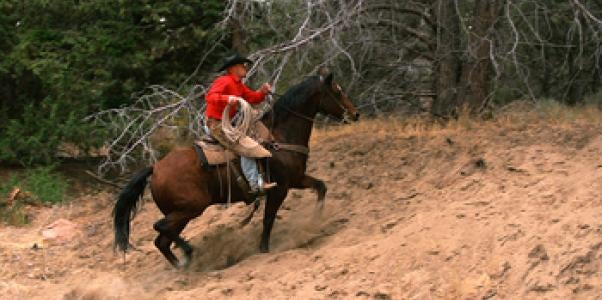An upstart rodeo association, created and owned by professional rodeo cowboys, challenged that its competitor’s bylaws aimed at the new association and its participants constituted agreements that unreasonably restrain trade and monopolize the market in violation of Sections 1 and 2 of the Sherman Act. Last week, a district court denied Plaintiffs’ preliminary injunction motion to block the enforcement of those bylaws. The district court also denied Defendants’ motion to dismiss on the new association’s Section 2 claim. The Elite Rodeo Association vs. Professional Rodeo Cowboys Association, No. 3-15-cv-03609 (N.D. Tex. Feb. 4, 2016). The district court found that Plaintiffs failed to establish that (i) the allegedly anticompetitive bylaws were likely to cause irreparable harm, (ii) Defendants’ board was capable of conspiring even though it was not comprised predominantly of competitors; and (iii) Defendants had the power to exclude competitors from the market. In reaching that conclusion, the district court had to address and distinguish a host of arguably applicable sports antitrust cases.
Background
The Professional Rodeo Cowboys Association, Inc. (“PRCA”), a not-for-profit membership organization, is North America’s most prestigious rodeo sanctioning body. The PRCA develops rodeo rules and procedures, and contracts with rodeo organizing committees to sanction and support multiple-event rodeos. It is an open membership organization—competitors who register and pay entry fees can compete in the PRCA-sanctioned rodeos.
Early last year, several of the PRCA’s most successful and famous contestants formed the Elite Rodeo Association (“ERA”), a member-owned for-profit rodeo association. The ERA was created as an alternative to the PRCA for several reasons, including (i) to provide competitors more certainty about the size of prizes, (ii) to establish rodeo schedules that increase competitors’ ability to obtain sponsors, and (iii) to reduce the duration of the rodeo season. The ERA’s inaugural season is scheduled to begin in March 2016, and the association has already obtained substantial financial sponsorship.
Last September, ERA members announced their intent to prioritize ERA’s 2016 season, while still competing in PRCA rodeos. Then in October, the PRCA enacted two new bylaws at a closed emergency board meeting that state:
Any person applying for PRCA membership who is an officer, board member, employee, or has an ownership or financial interest of any form in a Conflicting Rodeo Association shall not be issued a membership, permit or renewal of membership with the PRCA.
Any rodeo committee and/or contracting party involved in producing a PRCA-sanctioned event agrees not to schedule, produce, promote or participate in a Competing Rodeo Event seventy-two hours before, during or seventy-two hours after a PRCA-sanctioned event.
ERA and individual members filed a class action lawsuit against PRCA alleging that the new bylaws constitute unreasonable restraints on trade and monopolization in violation of Sections 1 and 2 of the Sherman Act. ERA then moved for a preliminary injunction against enforcement of the new bylaws. PRCA moved for dismissal.
Court’s Denial of Preliminary Injunction
The district court denied the preliminary injunction, holding that Plaintiffs did not make a clear showing that they would suffer irreparable harm absent a preliminary injunction, nor that they are likely to succeed on the merits.
Irreparable Harm
Plaintiffs claimed that they would suffer irreparable harm because the new bylaws would force them to choose between not competing in PRCA rodeos and giving up ownership interest in ERA. They argued that not competing in PRCA rodeos would harm their ability to make a living, and that giving up ownership in ERA would compromise the ERA’s ability to find sponsors and business partners.
The district court found that the evidence showed that ERA members are projected to earn as much through ERA rodeos as through PRCA rodeos. The district court distinguished this case from the “lost-playing-time” cases relied on by Plaintiffs. In those cases, the plaintiffs had suffered irreparable harm because they were entirely locked out of their sports when no comparable alternative leagues existed. One of those cases, Medlin v. Professional Rodeo Cowboys Ass’n, 1991 LEXIS 20847 (D. Colo. 1991), involved a previous PRCA bylaw banning competitors who participated in non-PRCA rodeos, where the court found irreparable harm.
But here, the ERA was created as an alternative rodeo association with arguably higher levels of competition than the PRCA. The district court reasoned that the success of the new ERA for its inaugural 2016 season was already locked in. Moreover, the district court pointed to recent entry of “open rodeos,” which are not sanctioned by any sanctioning body, that would be available to ERA owners/rodeo participants. The district court further found that Plaintiffs had not proven that ERA members would choose the PRCA over the ERA. None of the ERA’s owners testified that they would leave the ERA; they only speculated that others might. To the district court, these facts distinguished North American Soccer League v. National Football League, 465 F. Supp. 665 (S.D.N.Y. 1979), where a court found that a NFL bylaw, prohibiting NFL team owners from having a financial interest in another major team sports, threatened irreparable harm to the fledgling North American Soccer League.
Likelihood of Success on the Merits
On the Section 1 claim, the district court had to confront and apply the Supreme Court’s holding in American Needle, Inc. v. Nat’l Football League, 560 U.S. 183, 200 (2010) that “[a]greements made within [professional organizations and associations] can constitute concerted action….when the parties to the agreement act on interest separate from those of the [entity] itself, and the intra-[entity] agreements may simply be a formalistic shell for ongoing concerted action. Defendants here argued that an association can be legally capable of conspiring with its members only where the association’s board is “dominated by members that compete with one another outside” the association. Defendants relied heavily on the Fifth Circuit’s decision last year in Abraham & Veneklasen Joint Venture v. Am. Quarter Horse Ass’n (“AQHA”), 776 F.3d 321 (5th Cir. 2015), where the court rejected an attack on an AQHA bylaw because only a minority of committee members stood to gain financially from the bylaw in question.
The district court applied the AQHA reasoning here. It found that the PRCA board is comprised of representatives of rodeo committees, stock contractors, contract personnel, and contestants, and therefore is not dominated by horizontal competitors. The district court, however, assumed that concerted action could have occurred. Nonetheless, the district court held that Plaintiffs’ evidence did not make a clear showing of a conspiracy or concerted action. It found that Plaintiffs failed to show that a majority of the PRCA board members stood to profit from the new bylaws.
On the Section 2 claim, the district court concluded that Plaintiffs had not made a clear showing that the PRCA possesses monopoly power in the relevant market. Acknowledging that the PRCA appeared to have substantial market share, the district court still found that Plaintiffs did not make a clear showing that it had the power to exclude competition or that other barriers to entry exist in the relevant market. In its discussion of the issue, the district court noted that the ERA’s initial success actually demonstrates that the PRCA is not able to exclude competitors from the market.
Court’s Denial of Motion to Dismiss
Yet despite the holding rejecting a preliminary injunction, the district court did not dismiss Plaintiffs’ Section 2 claim, concluding that they had sufficiently and plausibly pled the existence of monopoly power.
With a multitude of sports cable networks needing programming to fill their schedules, this proliferation of competing organization and leagues is a foreseeable development in sports. The PRCA’s annual championship event, the Wrangler National Finals Rodeo, is broadcast live on the CBS Sports Network. The ERA has an agreement with Fox Sports to broadcast the entire ERA season. The open rodeo, The American rodeo, in Dallas, with its $6 million purse, is broadcast on cable network RFD-TV. The jockeying for position among these entities in sports will likely continue to lead to future antitrust challenges.
1 See, e.g., Brady v. Nat. Football League, 779 F. Supp. 2d 992, 1035-36 (D. Minn. 2011), abrogated on other grounds sub nom Brady v. Nat. Football League, (8th Cir. 2011); Linseman v. World Hockey Ass’n, 439 F. Supp. 1315, 1319-20 (D. Conn. 1977); Denver Rockets v. All-Pro Management, Inc., 325 F. Supp. 1049, 1062, (C.D. Cal. 1971), reinstated by Haywood v. Nat’l Basketball Ass’n, 401 U.S. 1204 (1971).





 i
i


